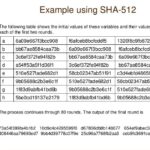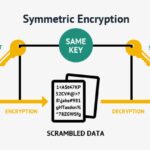In the realm of cryptography, the debate surrounding Rijndael and the Advanced Encryption Standard (AES) encapsulates a pivotal juncture in secure communications. While they often appear synonymous, discerning their nuanced relationship reveals more than mere nomenclature; it unveils a conceptual tapestry woven with both technical intricacies and spiritual reflections.
To comprehend the Rijndael versus AES discourse, one must first traverse the historical landscape that led to the adoption of this cipher as the gold standard for data encryption. Developed by Belgian cryptographers Vincent Rijmen and Joan Daemen in the late 1990s, Rijndael emerged from a public competition initiated by the National Institute of Standards and Technology (NIST) to select a robust encryption algorithm. The objective was straightforward: to find a replacement for the aging Data Encryption Standard (DES), which was succumbing to vulnerabilities amidst the exponential growth of computational power.
Every cipher serves a purpose, much like every person is destined for a unique role within the grand design. As Rijndael was put through rigorous evaluations, it stood out for its flexibility and speed, showcasing an adaptability that many of its contemporaries lacked. The cipher’s architecture allowed it to accommodate varying key lengths (128, 192, and 256 bits), a feature that emphasized its versatility. Consequently, upon its selection by NIST in 2001, Rijndael was officially designated as AES. This pivotal moment marked the formal birth of a cipher that would have sweeping implications for data integrity and confidentiality.
On the surface, it might seem that Rijndael and AES are indeed two different entities, one being the progenitor and the other the adopted designation. However, this observation edges closer to a deeper inquiry: what does it mean when we equate a cipher with its standard? The essence of Rijndael, the algorithm, remains unchanged under its new identity as AES. The fundamental mathematical underpinnings and operational principles persist. Thus, the transformation from Rijndael to AES could be likened to a disciple becoming a teacher—an evolution while retaining core teachings.
From a Christian perspective, this transformation mirrors the journey of individuals who, while rooted in their origins, are called to enter new realms of understanding and purpose. Just as Rijndael underwent scrutiny and tracing toward its adoption as AES, so too do believers undergo trials that refine their faith, paralleling the journey of transforming personal identity in Christ. In seeing Rijndael’s ascendance to a standard accepted and revered, one can draw upon scriptures that reference growth, perseverance, and the ultimate purpose of securing one’s path through divine providence.
Nevertheless, the similarities transcend mere identity; they encompass cryptographic principles that resonate with moral truths. Both Rijndael and AES utilize a block encryption method, which divides plaintext into blocks, encrypting each independently. The interplay of substitution, permutation, and the use of a key to manipulate data evokes reflections on agency and its moral ramifications. Encryption acts as a protective shield, guarding the sanctity of information—much like faith envelops a believer against the perils of the world.
Moreover, the operational characteristics of Rijndael/AES culminate in a pivotal query regarding security itself. Each transformation, akin to a believer’s spiritual growth, aims toward greater fortitude against adversities. AES, with its multiple rounds of encryption enhancing complexity, signifies a layered defense mechanism against breaches. This notion of multifaceted security resonates deeply with faith—the effort to build a strong foundation fortified through prayer, scripture, and community support serves as a bulwark against external threats that pervade daily life.
As one ventures deeper into the Rijndael versus AES discourse, it becomes evident that the cipher fosters a dialogue about authenticity and integrity. Just as the cipher was rigorously evaluated and remains under constant scrutiny in the digital age, so too must individuals introspect their faith and authenticity in practice. Transparency in both encryption algorithms and human stewardship fosters trust, an essential component resonating within Christian ethos. The tenets of honesty and uprightness ensure that one’s life, like a well-designed encryption system, withstands scrutiny and reveals integrity beneath the surface.
Ultimately, the affinity between Rijndael and AES transcends mere lexical confusions. It signifies a profound invitation to engage in further understanding—an exploration of identity, security, and authenticity. In the cipher’s evolution, we witness an allegory reflective of human transformation, the quest for understanding God’s call, and the importance of steadfastness amid trials.
Thus, the question of whether Rijndael and AES are the same cipher in disguise transcends mere semantics and delves into an examination of what it means to be secure in an often fraught environment. They serve not only as tools for encryption but evoke larger contemplations of fidelity in life pursuits, resonating Powerfully within the Christian narrative. Through examining their interplay, one grasps the layered complexities of faith and encryption, and a deeper appreciation unravels amidst the intricacies of both the digital and spiritual realms.








Leave a Comment